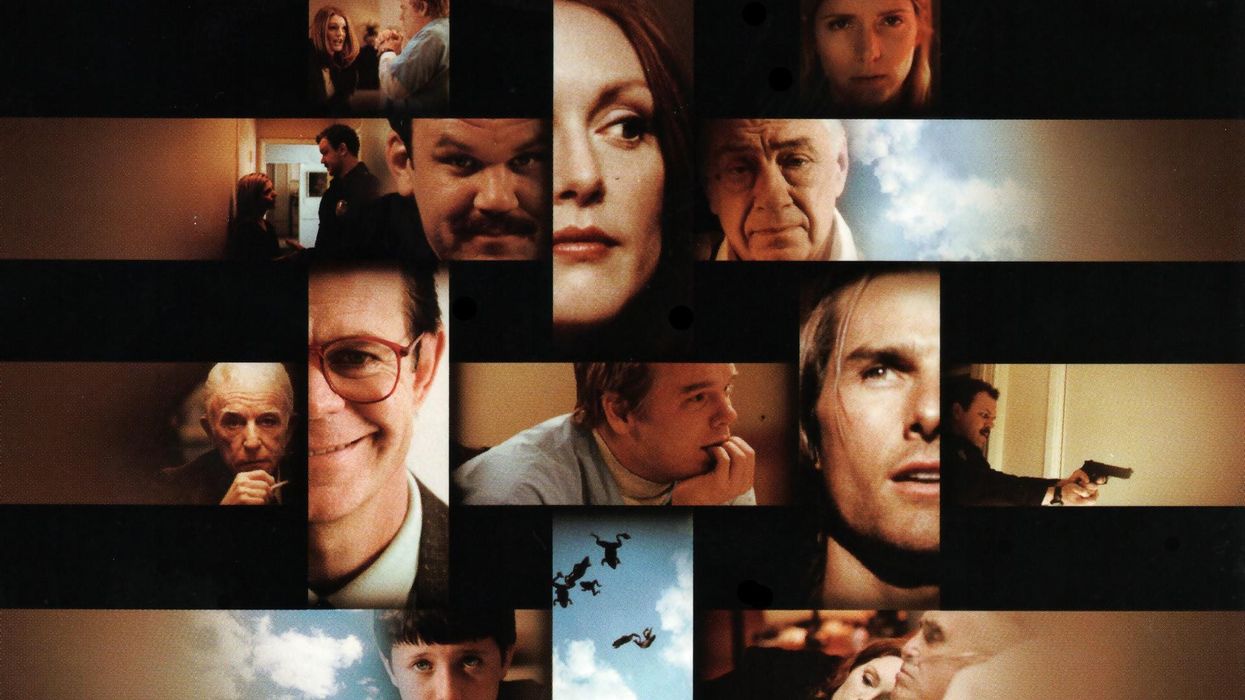How to Make Your Subplots Shine
Maybe you have the tight throughline, but how can the surrounding scenes stand out?

So much of the time we spend writing is focusing on what happens in the main plot. As a result, we often forget other things have to happen as well. Writing movies and TV shows is not an easy thing to do. You have to juggle characters, their motivations, and make sure the audience cares about all of them.
Today, I want to go over the stuff that happens outside of the main plot, the subplots, and the B-stories that make your movie or TV show feel whole. We'll learn about the strategies you can use while developing them, and we'll look at some great examples. I also want to take a deeper dive into the idea of romantic subplots, since they're so popular.
All right, enough stalling, let's leave the main plot behind and dig into what's left.
How to Make Your Screenwriting Subplots Shine
Before you know how to write great subplots, I think you better know the exact definition of what they are and how you can use them.
What is a Subplot?
In screenwriting for film and television, a subplot is one of the threads of the plot that is supporting the main plot.
There can be more than one subplot, and they can have crossover scenes with the main plot. Subplots usually have their own supporting characters besides the protagonist or antagonist. They have their own wants, desires, and arcs.
Are subplots different than B-stories?
Many people use these terms interchangeably, but there are small differences. Usually, B-stories directly involve your main character, whereas subplots do not.
Subplots run parallel to the A-story and usually are their own story.
B-stories usually run concurrently with the A-story and often develop within the main plot.
What's a B-story?
The B-story is your character’s secondary motivation or mission. Like if Indiana Jones wanted to get the Ark, but he also has to reconcile his relationship with Marion. The B-story could be a personal problem they need to fix, or it might be an emotional hurdle.
B-stories usually directly align with the theme of the screenplay.
For example, in The Wizard of Oz, Dorothy’s A-story is to find the Wizard and get home, but the B-story becomes helping Oz and her new friends. She had no idea she was going to have to do that until the adventure began.
Why are subplots used?
If you want to add a new dimension to your script to deepen your theme, a subplot can greatly help. Most scripts, whether film or television, have a few subplots. Now, you don't want so many that they distract from the main story, but lots of time they can support what's happening on the main pages.
In feature writing, subplots usually introduce themselves as the story enters into the second act. That's when characters go in different directions, and we see stories expand. In TV we might see subplots develop from the very first scenes, especially in sitcoms, which need them to move the plot along.
What makes the best subplot?
The best subplots build out the world of the story. They help expand the universe, the themes, and the overall mission and intention of the story.
Think about something like Lord of the Rings, which follows Frodo's quest to drop the ring into Mount Doom, but also tells the story of Man fighting Sauron, Gandalf becoming the White Wizard, an elven-human romance, and even the return of a long-forgotten king. Those subplots build out the journey, have some crossover with the A-plot, and steep us in our understanding of the director and writer's intentions.
Let's look at another subplot example.
Of course, subplots are crucial in TV shows. Think about a show like The Office, where the main plot might be the office partaking in a fun run. But the subplots could be whether or not Jim and Pam are dating, Toby beating Michael in the race, and some of the gang going out to have a drink instead of running.
Make sense?
Romantic subplots
Many times, romances are used as subplots.
One of my favorite romantic subplot examples is within the movie Safety Not Guaranteed. While in the main plot, we have a character investing in someone going back in time, and in the subplot we have a guy visiting a gal he used to date. And trying to reignite passions. We see him actually fall in love and then get rejected when he realizes he was a dick oh so long ago.
In TV, we get lots of romantic subplots. Think about Friends, with Janice and Chandler, or all of those teens in Riverdale figuring out who they're supposed to be dating.
Romantic subplots are great because they can keep fans interested and get people to root for things outside of the main ideas.
Wrapping up subplots
As you can see, a strong subplot allows the A-plot to shine. It can also reinforce the story's theme and broaden the perspectives shown to the audience. In many movies and TV shows, especially those with ensemble casts, it's incredibly important to develop these ideas and storylines so that people stay tuned or stay involved in the drama.
What are some of your favorite B-stories and subplots? I want to hear why you like them and what you've learned from them. Let us know about them in the comments.
And now, get back to writing!
- Seth Rogen Explains the Difference Between Story and Plot ›
- What a Plot? (Definition and Examples) ›
- How to Write An Ensemble Cast ›
- What are Parallel Storylines? ›
















